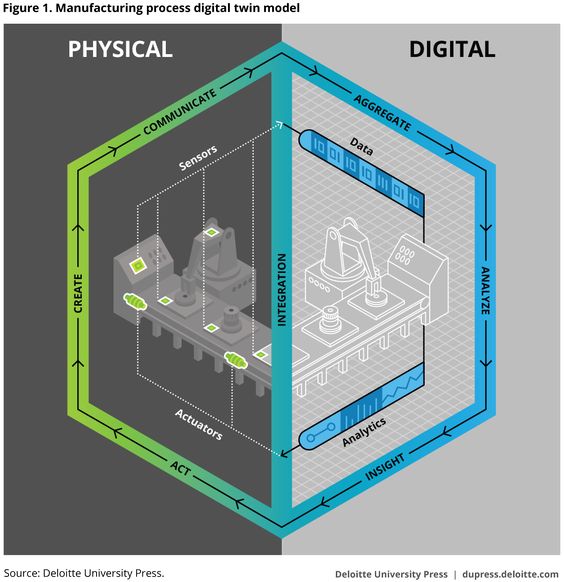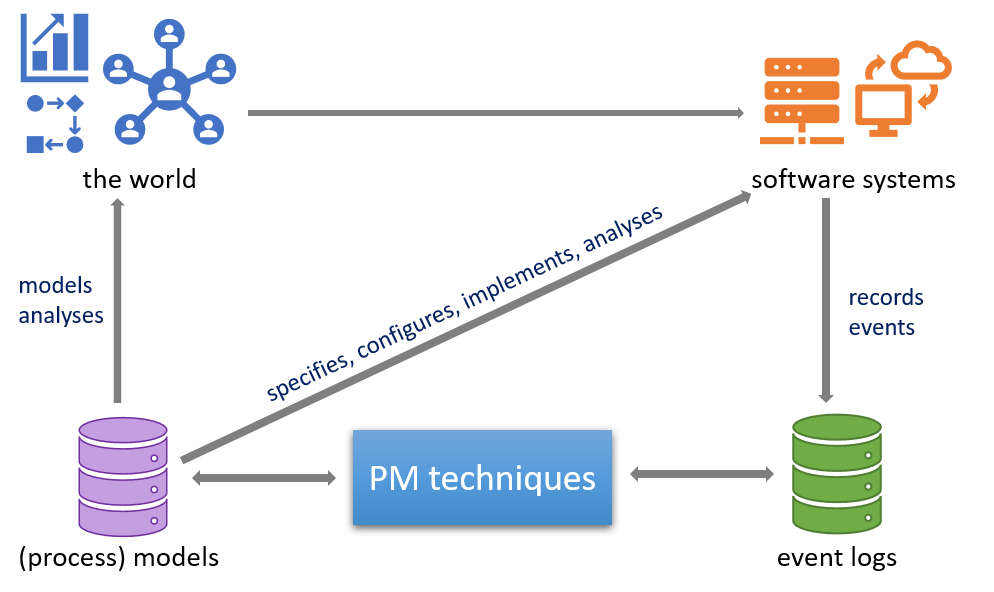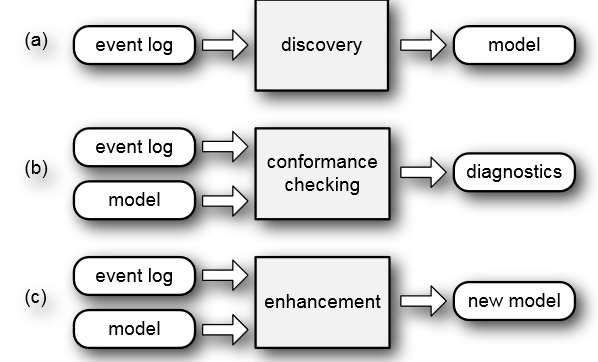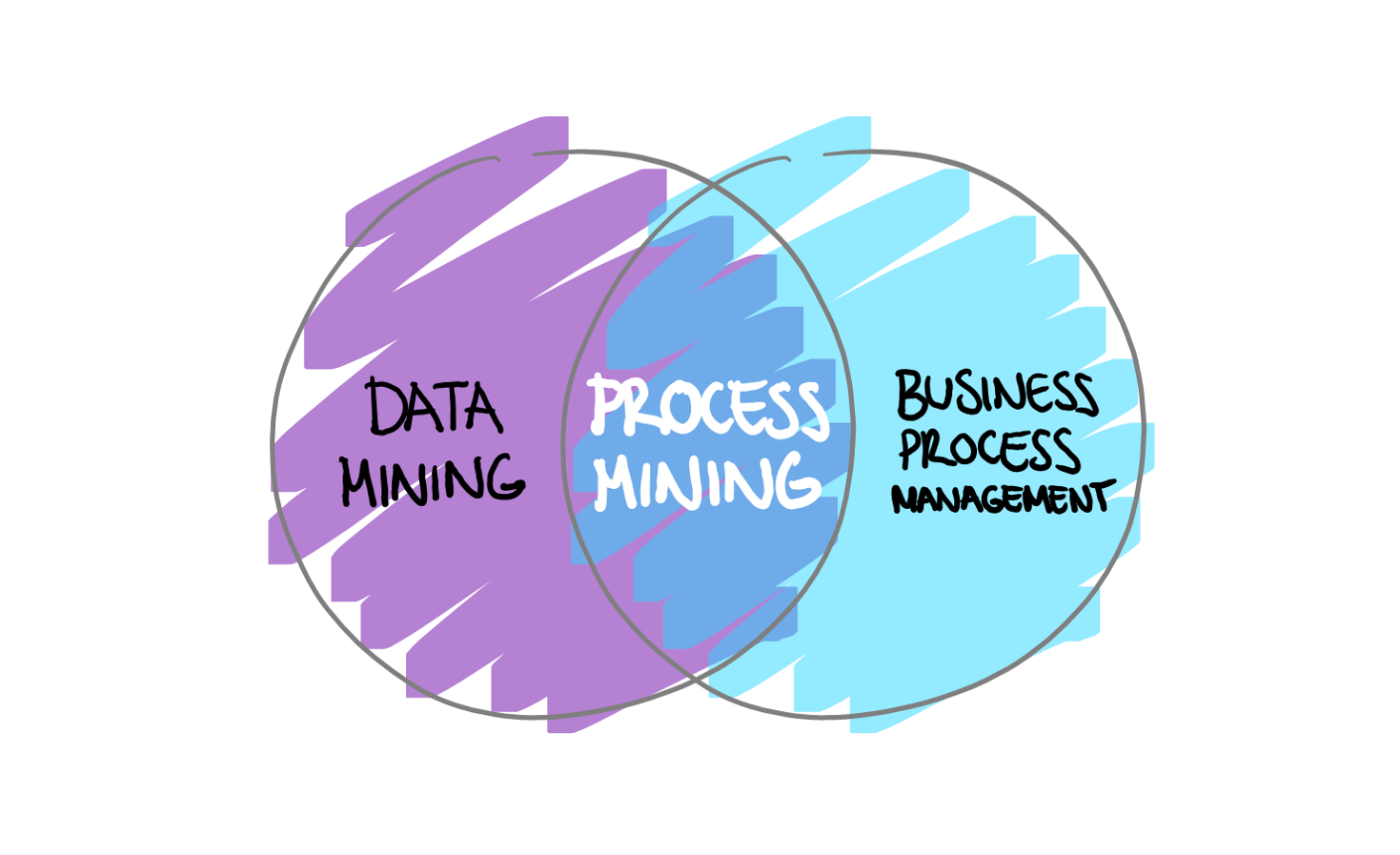The Origin and Motivation for Process Mining
Wil van der Aalst, known as the “Godfather of Process Mining” is a well-known researcher and advisor in the industry. This field of research has emerged two decades ago as an alternative to existing approaches which either implemented BPM solutions that were not successful, or solutions that attempted to improve models instead of improving the real processes. Hence, van der Aalst started to work on Process Mining which can be viewed as an alliance between data science and process management. This association supports stronger relationships between IT and business teams since it is expected to use data – also referred as events – from the IT systems to improve the operational processes. IT systems provide the true and concrete sources of information for business processes, and the business teams leverage the log of events to improve their products and the customer experience. In parallel, employers experience is also enhanced as they are provided with information that represents the real processes instead of models that may be inaccurate.
The “Happy Path” and the “PowerPoint” Reality
Whatever it is the process being analysed, there are always unknown or unexpected exceptions in the flows. If we take as an example the concept of Desired Paths (Figure 1), we will see that what is happening in reality is quite different from what was designed by the solution’s architects. Therefore, teams need to have visibility about what is happening outside the “Happy Path” (concept that describes the planned path without deviations).

In the awake of the problematic mentioned above, do you ever observed a scenario were one of your colleagues asked someone “Can you explain me how process X works?” And the answer is a version of the following:
We don’t have any documentation about it… I believe that John Doe is the only person that knows the process, but he left the company last year…
We have the documentation right here, let me show it to you. Well, the last update was 3 years ago, but probably it is still accurate!
I only have the process partially documented. If you give some days, I will provide you the full picture.
The previous sentences are examples unfortunately common for a great number of companies. This type of sentences clearly shows a legitimate opportunity for improvement, as these display a lack of knowledge about what is really happening in “Production”. Even for a company with good documentation practices, are they sure that real processes are the ones described in the documentation repositories?
At his presentation at Process Mining Camp 2018, Niyi Ogunbiyi from the Deutsche Bank, shared his process mining journey and a set of five important lessons. Ogunbiyi also mentions the relatable concept of PowerPoint reality: “what people tell you … it is not what happens”.
The digital twins: alignment between the digital and physical world
In Gartner’s Top 10 Strategic Trends for 2019, the concept of Digital Twin comes up in 4th, being defined as “a digital representation that mirrors a real-life object, process or system”. A more detailed definition from Gartner states that a Digital Twin of an Organization (DTO) “is a dynamic software model of any organization that relies on operational and/or other data to understand its state, respond to changes, improve operations and add value”.
Why suddenly do we mention the concept of Digital Twin in this article? It is worth mentioning because Process Mining techniques match this concept perfectly, in the sense that a digital view of the processes is possible to be achieved with these techniques. Organizations can discover and/or validate their real processes, and at the same time, the expertise and maturity level for future developments is strengthened.

Process Mining Techniques and Typical Use Cases
We have highlighted some questions that may be raised when we are building our digital twins, and when are trying to discover, validate or understand the processes that support our enterprises. Typically, the use cases of application aim to answer the following questions:
- What is the process that people really follow?
- Where are the bottlenecks in my process?
- Where do people (or machines) deviate from the expected or planned?
In Process Mining, these use cases are addressed through the application of three types of techniques: discovery, conformance checking and enhancement. The interactions between the “world”, IT Systems, events and models are displayed in Figure 3.

The three techniques have different inputs and outputs as depicted in Figure 4. Succinctly, discovery uses the events to discover a model for the processes, without having a reference model; conformance checking compares an existing reference model with the events generated by the processes, to validate that reality matches the model; and finally, enhancement consists on the improvement of the current model taking advantage of the events generated by the processes. More details and examples for these techniques are expected in future articles.

A Growing Community and a Panoply of Available Resources
van der Aalst’s advocacy of Process Mining has been proved quite fruitful, not only because it contributed to the implementation of specific PM tools such as Disco, but also because he actively contributes for the creation of learning content that allows the advancement of the topic. An example is the 1st International Conference on Process Mining (ICPM 2019), which took place last year in Aachen, Germany, supported by IEEE. Other invaluable contributions include: the first book on PM Process Mining. Data Science in Action, and the online courses in Coursera. Moreover, there is currently a task force on process mining that aims to improve this field, also promoted by IEEE.

This is the first part of a set of articles that we are planning to publish on the topic. Each step of the path in the “Process Discovery” of Process Mining domain will be a source of invaluable information. This is true not only for La Redoute team, but also for all readers that can consider our framework as a platform for shared knowledge.

